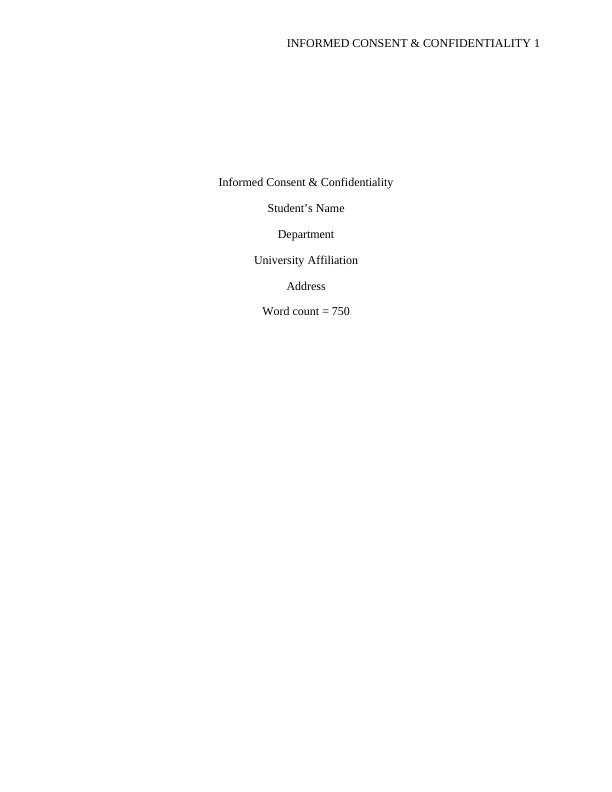Ask a question from expert
Informed Consent & Confidentiality
4 Pages1100 Words174 Views
Added on 2020-03-15
Informed Consent & Confidentiality
Added on 2020-03-15
BookmarkShareRelated Documents
End of preview
Want to access all the pages? Upload your documents or become a member.
Genetic Testing Of Fetuses
|3
|646
|16
Legal and Ethical Responsibilities of Nurses in Seeking Consent from Mental Health Patients
|7
|1269
|294
Nurses and Midwives Ethical and legal Accountabilities and Responsibilities Case Study 2022
|10
|3500
|25
The Importance of Human Dignity in Healthcare and Nursing
|4
|759
|71
Nursing Ethics
|5
|1283
|415

